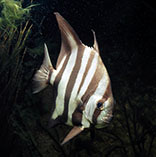http://www.fishbase.org/Summary/speciesSummary.php?genusname=Chaetodipterus&speciesname=faber ---> http://192.134.151.83/Summary/speciesSummary.php?genusname=Chaetodipterus&speciesname=faber
http://192.134.151.83/Summary/speciesSummary.php?genusname=Chaetodipterus&speciesname=faber ---> https://fishbase.mnhn.fr/Summary/speciesSummary.php?genusname=Chaetodipterus&speciesname=faber
https://fishbase.mnhn.fr/Summary/speciesSummary.php?genusname=Chaetodipterus&speciesname=faber ---> https://fishbase.mnhn.fr/summary/Chaetodipterus-faber.html
Chaetodipterus faber, Atlantic spadefish : fisheries, aquaculture, gamefish, aquarium

You can
sponsor
this page
Common name (e.g. trout)
Genus + Species (e.g. Gadus morhua)
-

-
About this page
-
Languages
-
User feedbacks
-
Citation
-
Uploads
-
Related species
-


 Atlantic spadefish
Add your observation in
Fish Watcher
Upload your
photos
and
videos
Atlantic spadefish
Add your observation in
Fish Watcher
Upload your
photos
and
videos
Pictures
|
Videos |
Google image
 Chaetodipterus faber
Chaetodipterus faber
Picture by
Muséum-Aquarium de Nancy/D. Terver
Teleostei (teleosts) >
Acanthuriformes
(Surgeonfishes) >
Ephippidae
(Spadefishes, batfishes and scats)
Etymology:
Chaetodipterus:
Greek, chaite = hair + Greek, dipteros = with two fins (Ref.
45335
)
.
Environment: milieu / climate zone / depth range / distribution range
Ecology
Marine; brackish; reef-associated; oceanodromous (Ref.
51243
); depth range 3 - 35 m (Ref.
26912
). Subtropical; 43°N - 34°S, 98°W - 34°W
Western Atlantic: Massachusetts, USA and northern Gulf of Mexico to Rio Grande do Sul, Brazil (Ref.
47377
).
Length at first maturity / Size / Weight / Age
Maturity: L
m
?
, range 12 - ? cm
Max length : 91.0 cm TL male/unsexed; (Ref.
7251
); common length : 50.4 cm TL male/unsexed; (Ref.
26466
); max. published weight: 9.0 kg (Ref.
7251
)
Dorsal
spines
(total): 9;
Dorsal
soft rays
(total): 21-24;
Anal
spines
: 3;
Anal
soft rays
: 17 - 18. Very deep-bodied, compressed, disk-shaped fish with a very blunt snout. Irregular, bold, blackish, vertical bands that fade with age. Second dorsal and anal fins have high anterior lobes (Ref.
26938
). Mouth small, the maxilla of adults ending beneath nostrils; no teeth on roof of mouth; scales ctenoid; head and fins scaled; opercle ends in an obtuse point (Ref.
13442
).
Abundant in shallow coastal waters, from mangroves and sandy beaches to wrecks and harbors. Juveniles (black phase) are common in estuaries and often found in very shallow water swimming at an angle resembling dead leaves or as infertile red mangrove pods and other debris. Adults often occur in very large schools of up to 500 individuals (Ref.
9710
). Feed on benthic invertebrates like crustaceans, mollusks, annelids, cnidarians as well as on plankton (Ref.
35237
). Good food fish (Ref.
5521
); marketed fresh (Ref.
5217
). Often circles divers (Ref.
9710
). Minimum depth from Ref. 9710. In southeastern Brazil found between 23 and 45 m (Ref.
47377
). Has been reared in captivity (Ref.
35425
).
Life cycle and mating behavior
Maturity
|
Reproduction
|
Spawning
|
Eggs
|
Fecundity
|
Larvae
Robins, C.R. and G.C. Ray
, 1986. A field guide to Atlantic coast fishes of North America. Houghton Mifflin Company, Boston, U.S.A. 354 p. (Ref.
7251
)
IUCN Red List Status (Ref.
130435
)
Least Concern (LC)
; Date assessed:
29 January 2013
CITES
Not Evaluated
Not Evaluated
Threat to humans
Reports of ciguatera poisoning (Ref.
30303
)
Human uses
Fisheries: minor commercial; aquaculture: commercial; gamefish: yes; aquarium: public aquariums
FAO - Publication:
search
|
FishSource
|
Sea Around Us
More information
Countries
FAO areas
Ecosystems
Occurrences
Introductions
Stocks
Ecology
Diet
Food items
Food consumption
Ration
Common names
Synonyms
Metabolism
Predators
Ecotoxicology
Reproduction
Maturity
Spawning
Spawning aggregation
Fecundity
Eggs
Egg development
Age/Size
Growth
Length-weight
Length-length
Length-frequencies
Morphometrics
Morphology
Larvae
Larval dynamics
Recruitment
Abundance
BRUVS
References
Aquaculture
Aquaculture profile
Strains
Genetics
Electrophoreses
Heritability
Diseases
Processing
Nutrients
Mass conversion
Collaborators
Pictures
Stamps, Coins Misc.
Sounds
Ciguatera
Speed
Swim. type
Gill area
Otoliths
Brains
Vision
Tools
Bio-Quiz
|
E-book
|
Field guide
|
Length-frequency wizard
|
Life-history tool
|
Point map
|
Classification Tree
|
Catch-MSY
|
Special reports
Check for Aquarium maintenance
|
Check for Species Fact Sheets
|
Check for Aquaculture Fact Sheets
Download XML
Summary page
|
Point data
|
Common names
|
Photos
Internet sources
AFORO (otoliths) |
Alien/Invasive Species database
|
Aquatic Commons
|
BHL
|
Cloffa
|
BOLDSystems
|
Websites from users
|
Check FishWatcher
|
CISTI
|
Catalog of Fishes
:
genus
,
species
|
DiscoverLife
|
DORIS
|
ECOTOX
| FAO - Publication:
search
|
Faunafri
| Fishipedia |
Fishtrace
| GenBank:
genome
,
nucleotide
|
GloBI
|
GoMexSI
(interaction data)
|
Google Books
|
Google Scholar
|
Google
|
IGFA World Record
|
MitoFish
|
National databases
|
OceanAdapt
|
Otolith Atlas of Taiwan Fishes
|
Public aquariums
|
PubMed
|
Reef Life Survey
| Socotra Atlas |
Tree of Life
| Wikipedia:
Go
,
Search
| World Records Freshwater Fishing |
Zoological Record
Estimates based on models
Preferred temperature (Ref.
123201
): 22.6 - 28, mean 25.4 °C (based on 380 cells).
Phylogenetic diversity index (Ref.
82804
): PD
50
= 0.6250 [Uniqueness, from 0.5 = low to 2.0 = high].
Bayesian length-weight: a=0.03311 (0.02580 - 0.04250), b=2.94 (2.87 - 3.01), in cm total length, based on LWR estimates for this species (Ref.
93245
).
Trophic level (Ref.
69278
): 4.5 ±0.0 se; based on diet studies.
Resilience (Ref.
120179
): Medium, minimum population doubling time 1.4 - 4.4 years (tmax=8; tm=1; K=0.34).
Fishing Vulnerability (Ref.
59153
): Moderate to high vulnerability (49 of 100).
Price category (Ref.
80766
):
Medium
.
Nutrients (Ref.
124155
): Calcium = 16 [7, 41] mg/100g; Iron = 0.412 [0.214, 0.762] mg/100g; Protein = 20.3 [19.1, 21.4] %; Omega3 = 0.165 [0.090, 0.311] g/100g; Selenium = 15.9 [6.9, 34.9] μg/100g; VitaminA = 24.7 [5.6, 116.7] μg/100g; Zinc = 0.532 [0.327, 0.832] mg/100g (wet weight);
Back to Search
Random Species
Back to Top
Accessed through:
Not available
FishBase mirror site :
localhost
Page last modified by :
mrius-barile
- 20 July 2016
Fatal error
: Uncaught ArgumentCountError: Too few arguments to function checkEcotox(), 1 passed in /var/www/html/summary/speciessummary.php on line 2304 and exactly 3 expected in /var/www/html/includes/speciessummary.lib.php:2579 Stack trace: #0 /var/www/html/summary/speciessummary.php(2304): checkEcotox() #1 {main} thrown in
/var/www/html/includes/speciessummary.lib.php
on line
2579
|